DAYLIGHT
"No space, architecturally, is a space unless it has natural light."
___Louis I. Kahn
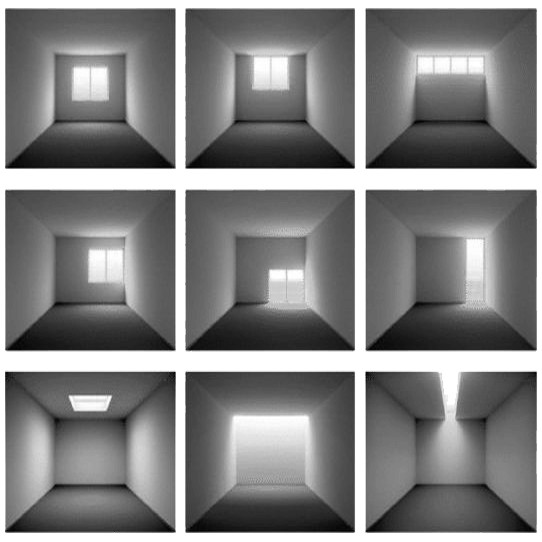
Daylight- The natural light of the day

Daylighting- The use of light from the sun and sky to complement or replace electric light with appropriate fenestration and lighting controls to modulate daylight admittance. It is a source of heat as well.

Objectives for applying daylighting systems:
- Redirecting daylight to under-lit zones
- Improving daylighting for task illumination
- Improving visual comfort, glare control
- Achieving solar shading, thermal control.
Sources of Natural Light in a Building
- Diffuse light: The light which comes from larger and regular openings.
- Direct light: The light which comes from the direct sunlight at the desired location on the floor or other surface.
- Zenith light: The light which comes from the ceiling.
- Reflected light: The light which comes from any surface and redirected into space.
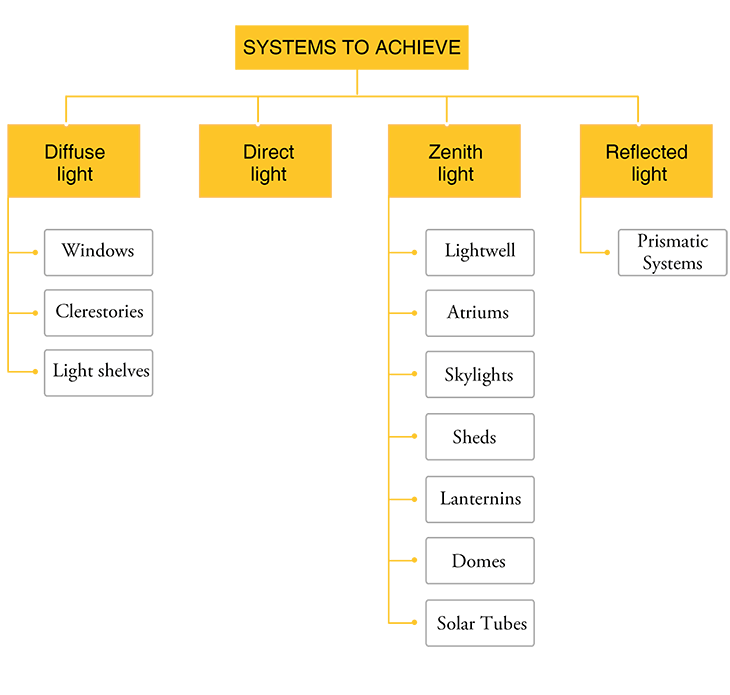
Systems to Achieve Diffuse Light
These systems are located in a vertical enclosing surfaces on the walls, between two different light environments, and are designed to let diffused light into the environment inside.Windows
Windows are openings fitted with glass to admit light and are often openable to allow ventilation. Some design parameters are:- The higher the window, the deeper the daylighting zone.
- Depth of a day lighted zone is typically 1.5 to 2 times the window head height.
- With standard window and ceiling heights (between 7 and 10 ft), the expected adequate daylight would be within 20 feet.
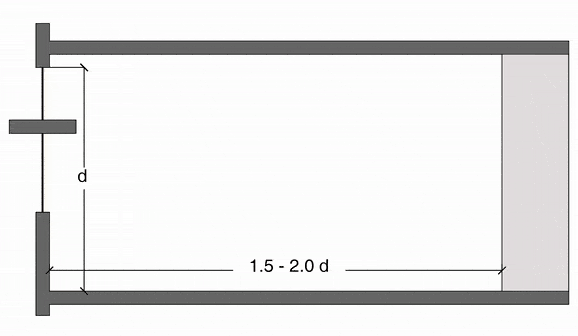
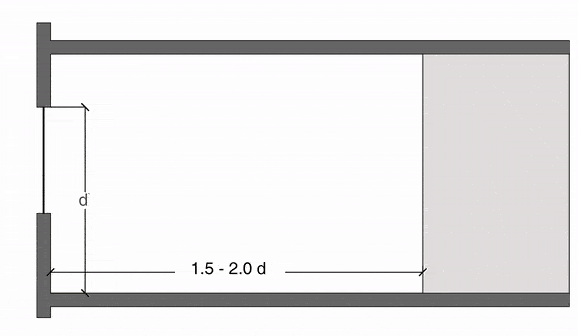
- Strip windows provide more uniform daylight.
- Continuous strip window is the easiest way to provide adequate and even daylight.
- Punched windows breaks can create contrasts of light and dark areas.
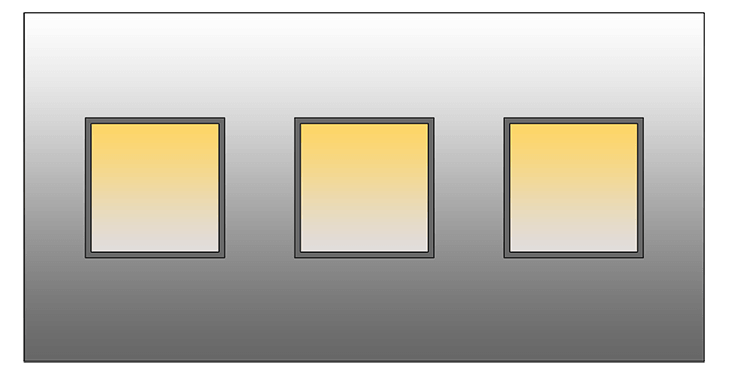

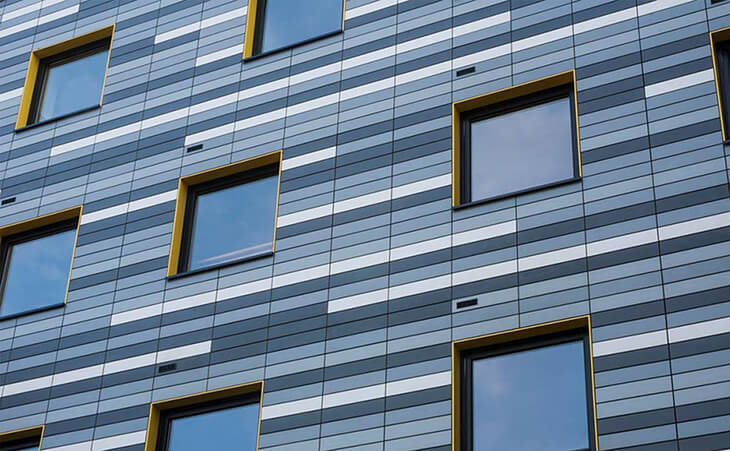
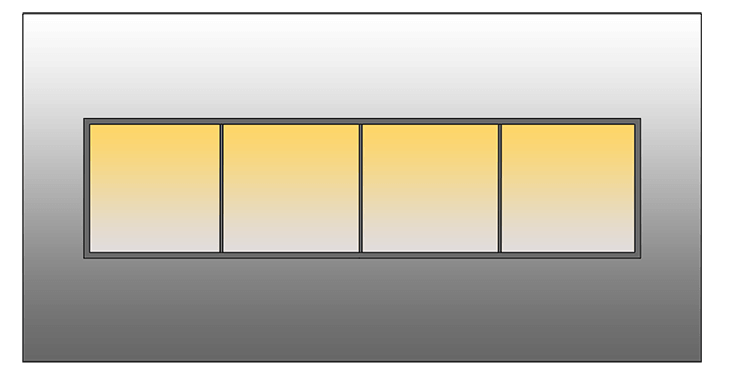
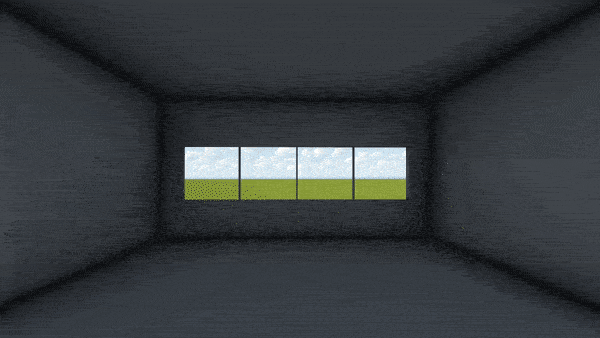

- Separate apertures for view and daylight
- Use high-transmission, clearer glazing in clerestory windows.
- Use lower transmission glazing in view windows to control glare.
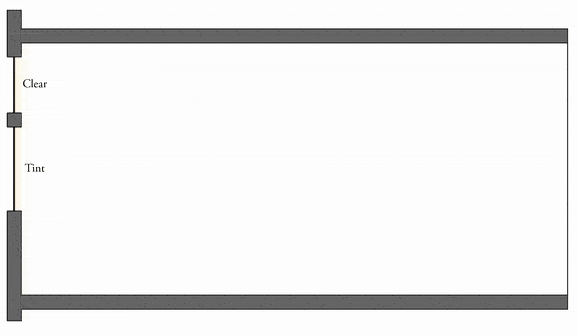
- Position windows to direct light onto the ceiling.
- Taller ceilings (smooth and light colored) and high windows provide better light distribution.
- A sloped ceiling is one way to fit a high window within normal floor-to-floor heights.
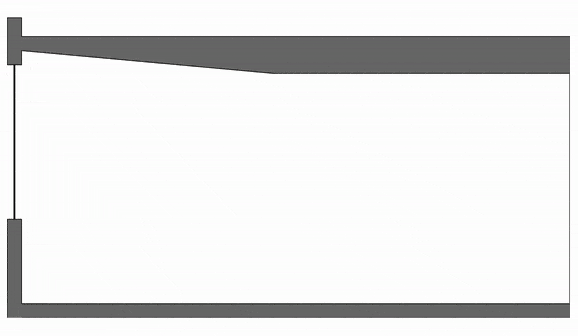

- Use horizontal window shapes.
- Horizontal shapes provide even light distribution with less glare.
- Vertical windows create light/dark contrasts but taller windows provide deeper penetration.
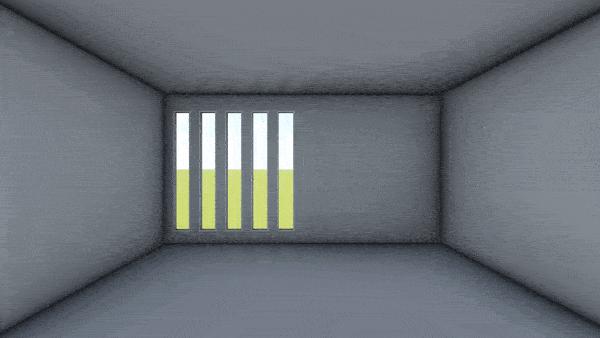
Windows on every orientation can provide useful daylight.
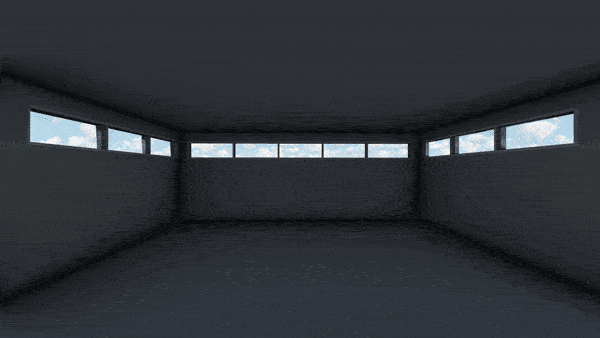
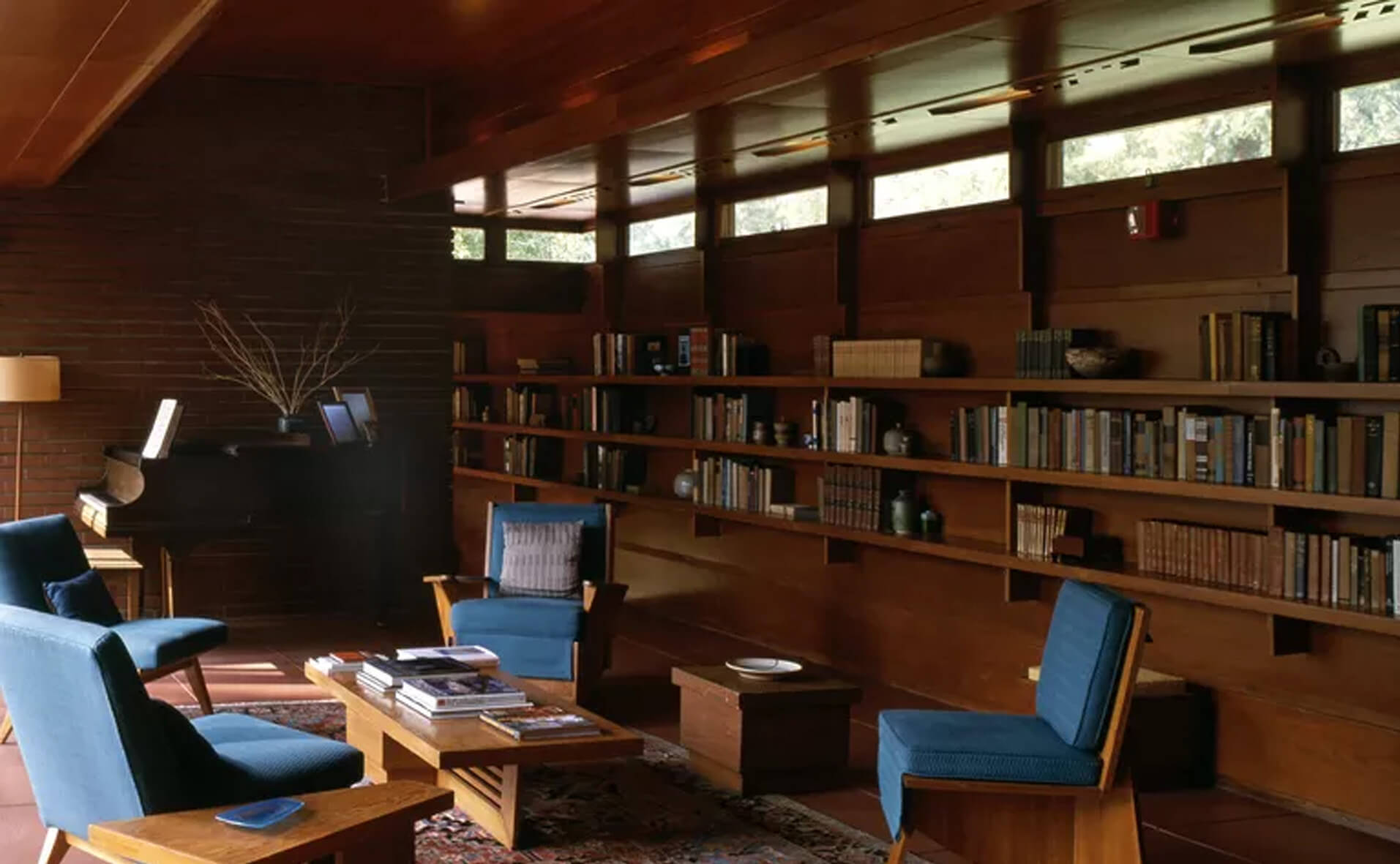
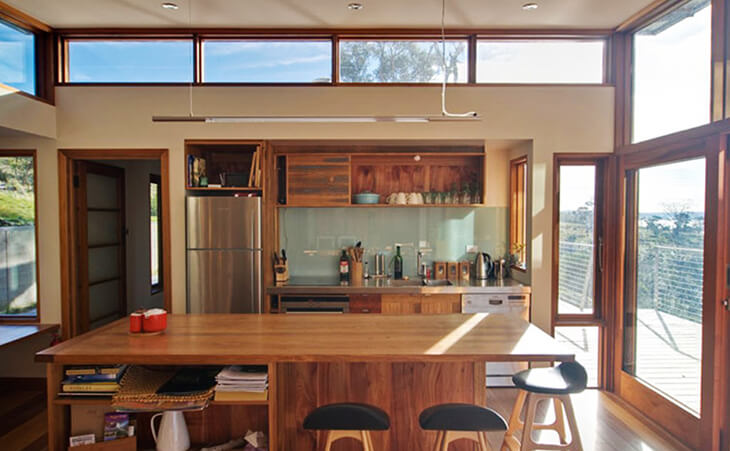



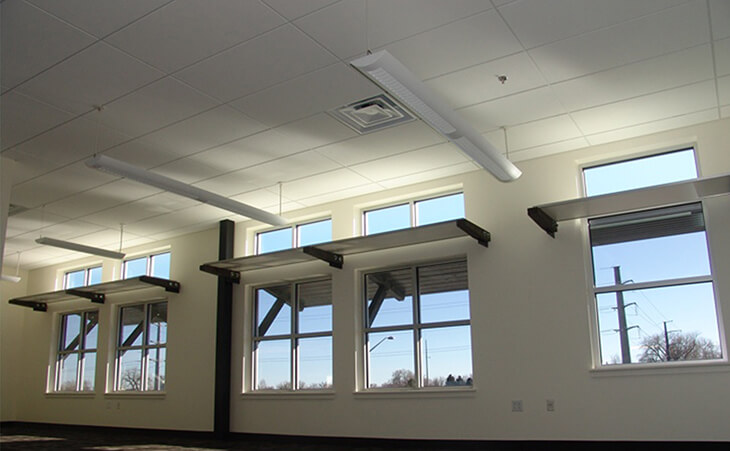
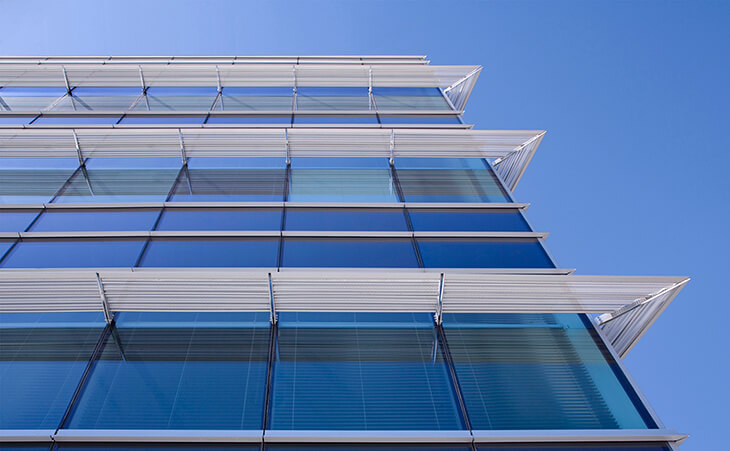
- North: High-quality consistent daylight with minimal heat gains.
- South: Good access to strong illumination but varies throughout the day.
- East and West: Shading is difficult but critical for comfort on both sides and heat gain too.
Clerestories
- A large window or series of small windows along the top of a structure's wall, usually at or near the roof line.
- Good for effective ceiling illumination (which provides deeper penetration and good distribution) and other glare-sensitive tasks.
- A 1-foot high south clerestory with effective blinds can light a 150-square foot, 12-foot deep space under sunny conditions.



Light Shelves
A passive architectural device used to reflect natural daylight by bouncing sunlight off a horizontal plane.- It can improve illuminance distribution and reduce glare.
- It can be fixed either externally, internally or both.
- It is best incorporated on the south wall and best-suited to mild rather than tropical or desert climates.
- The ceiling should be smooth and light-colored and shelf's top preferably be matt white.

- Minimum distance from the ceiling: 2 ft. (.6 m )
- The depth of an light shelf = Height of the glazing above it.
- Upper glazing area should minimum be of 8% to 11% of the floor area to be daylight.
- Minimum clear height = 9 ft. (3 m )




Systems to Achieve Zenith Light
These systems are located in horizontal enclosing surfaces in the roof, between two different light environments, and are designed to let zenithal light into the environment below.
Lightwell
- The form of a vertical shaft within the volume of a building that typically penetrates from roof level down to lower levels, allowing the transmission of natural light.
- It also provides an open space that can be used as an outdoor open area.
- Small, highly-reflective light wells that collect light and transmit it to the interior of a building may be referred to as light tubes.
 For 2 floors:
For 2 floors:
- Minimum court width = 6'
- Minimum court length = 10'
- Width = 6' + 1 (no. of floors = 2)
- Length = 10' + 2 (no. of floors = 2)

Atriums
- A large light well may be referred to as an atrium.
- These open directly on roofs, in most cases with pyramidal or gabled geometries, built with metal profiles and a glass closure.
- This typology is recommended for buildings with a greater number of floors.
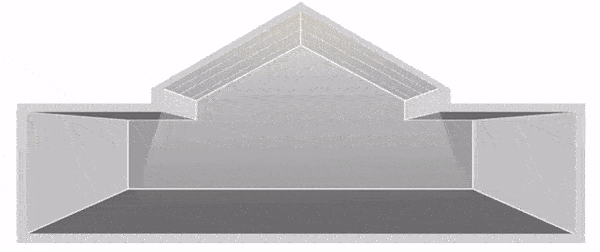
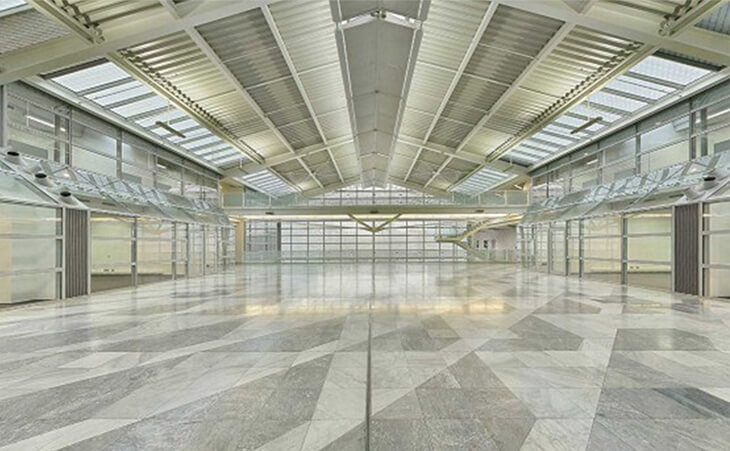
Types of Atriums


Skylights
- It allows the direct entrance of natural light into the internal region of the construction.
- The use of translucent glass on its upper side allows high percentage of light but also tend to gain thermal loads, which increases temperature.
- A layer of laminated glass or poly carbonate can be used which allows light to enter indirectly and reduces the light percentage.
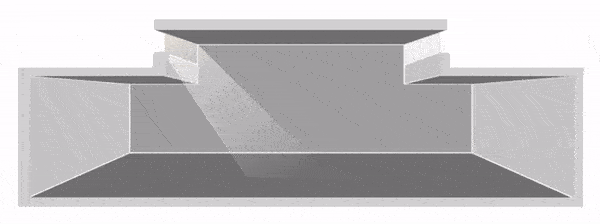
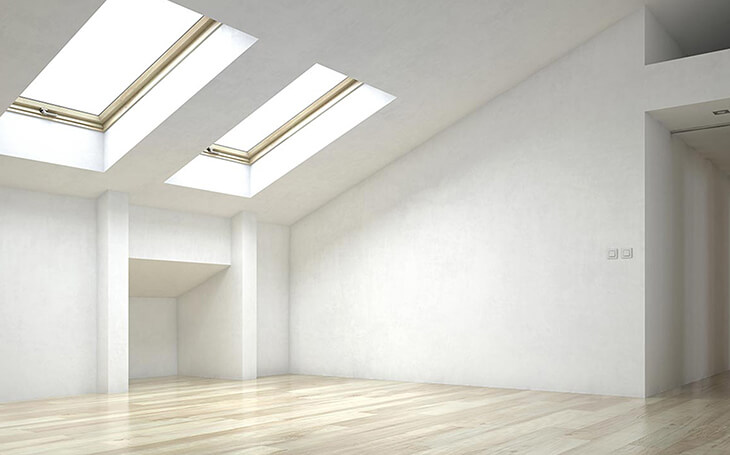
Sheds
- These devices based on the saw tooth geometry of the roofs, with inclinations strategically arranged to receive light.
- They are usually positioned in relation to the facade with less sunlight, allowing natural light without direct sunlight.
- In this system it is essential to close by glass frames to prevent infiltration from the rains.
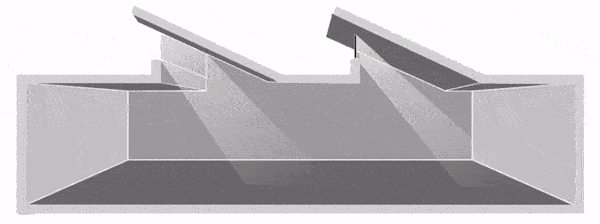

Lanternins
- The openings that protrude in relation to the roof, they can appear as small roofs superimposed on the ridges, creating small glazed projections that receive the entrance of natural light.
- This system allows the continuous renewal of the air if mobile frames are used, allowing constant changes from the assumption that hot air tends to rise.

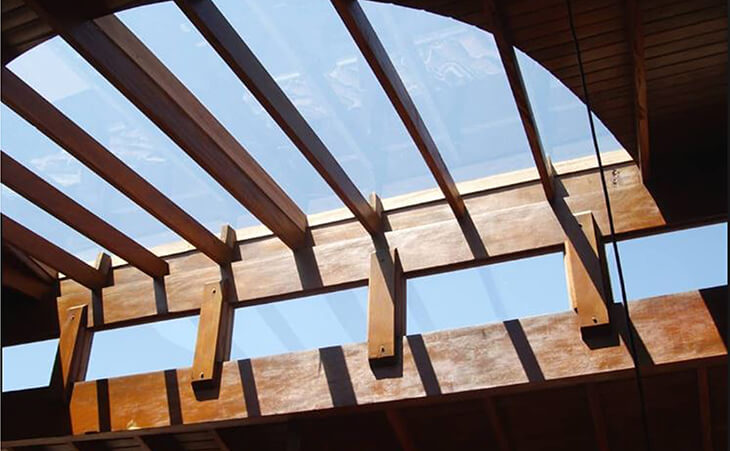
Domes
- Domes provide a more far-reaching lighting effect in comparison with other zenithal systems.
- Due to the large dimensions assumed, they tend to generate large thermal loads inside the buildings.
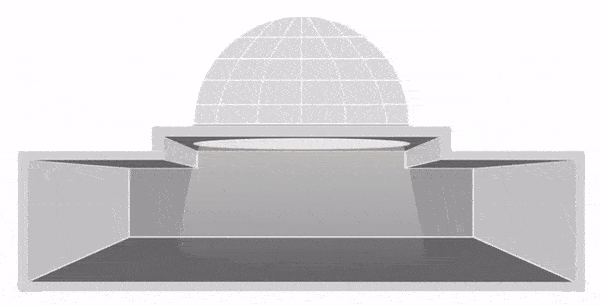

Solar Tubes
- These systems carry light through reflections where it is not feasible to install other systems.
- Internally the tubes are coated with reflective materials, generating different light intensities as a result of their dimensions and materiality.
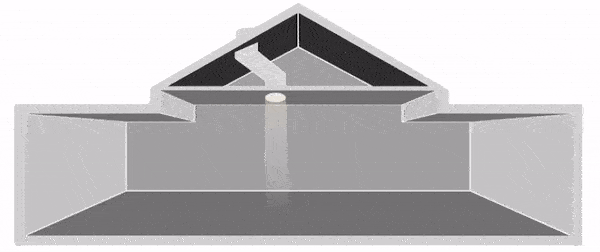
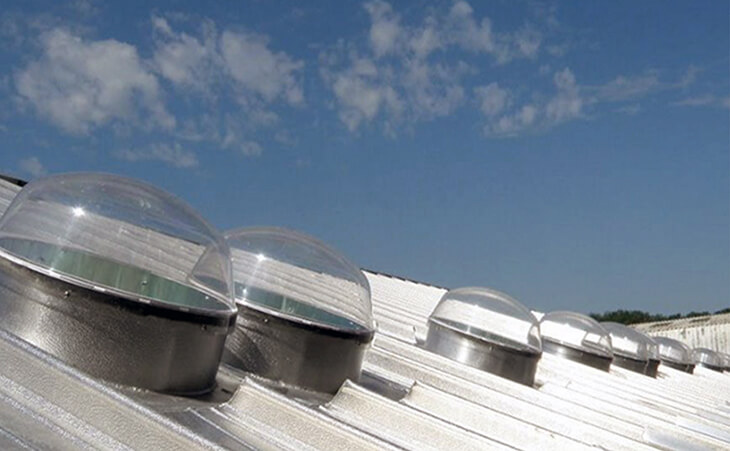
Systems to Achieve Reflected Light
The systems are located in the spaces which helps to redirect the light into the environment.Prismatic Panels
- Prismatic glazing is designed to change the direction of incoming sunlight and redirect it by way of refraction and reflection.
- It can be placed in the upper portion of a side window as a ray of light hits the prism, part of the light is then directed towards the ceiling to be later reflected, while the other part comes inside the room directly.
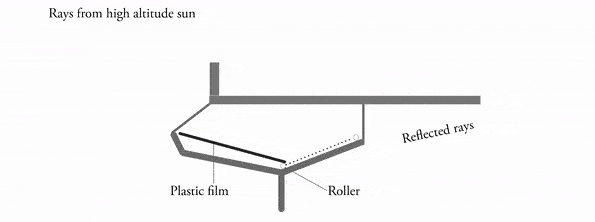
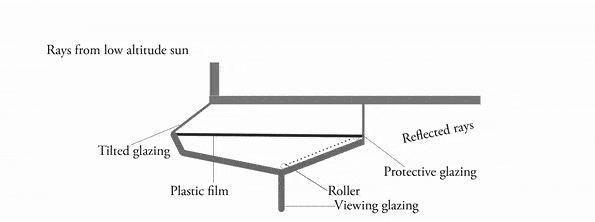
a. Movable prism system
These offer solar protection and control the daylight: orthogonally incident sunlight is reflected while daylight entering from other directions is guided into the room.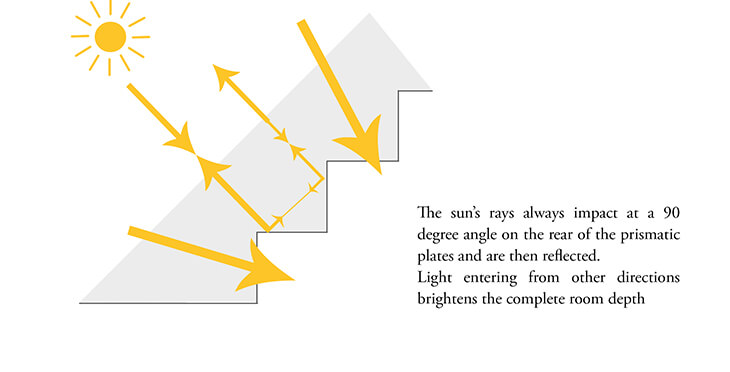
These can be installed vertically to facades or horizontally upon glazed courtyards or glass roofs.

b. Stationary prism system
These enlarge the blockage range and completely eliminate direct sunlight, allowing use especially in inclined glass facades and roofs.
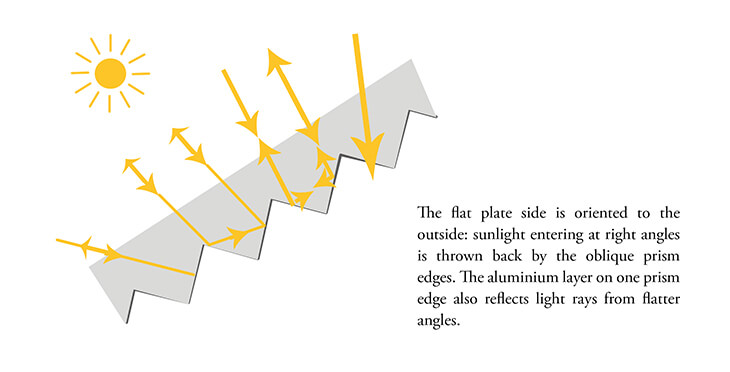
The plates are cut to suit and installed in insulated window panes, roof lights and glazed roofs. This guarantees protection from humidity and soiling.







